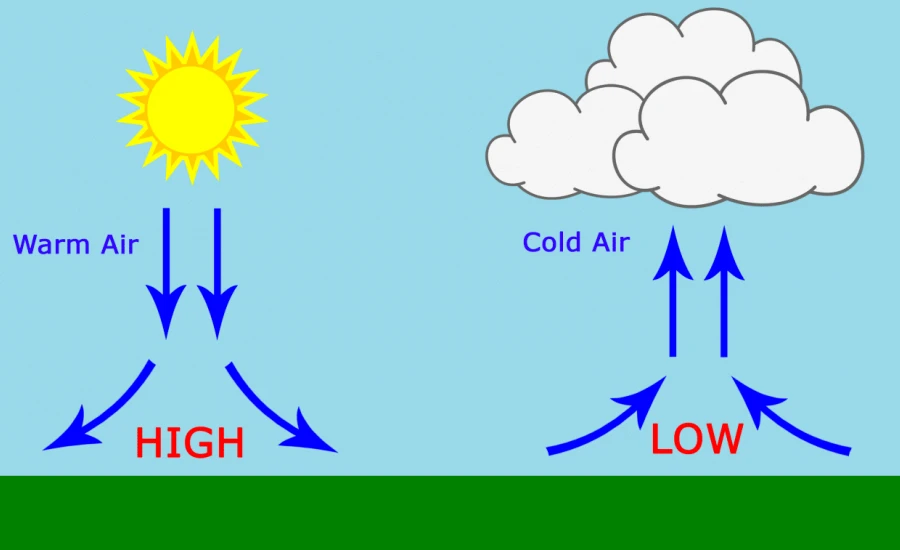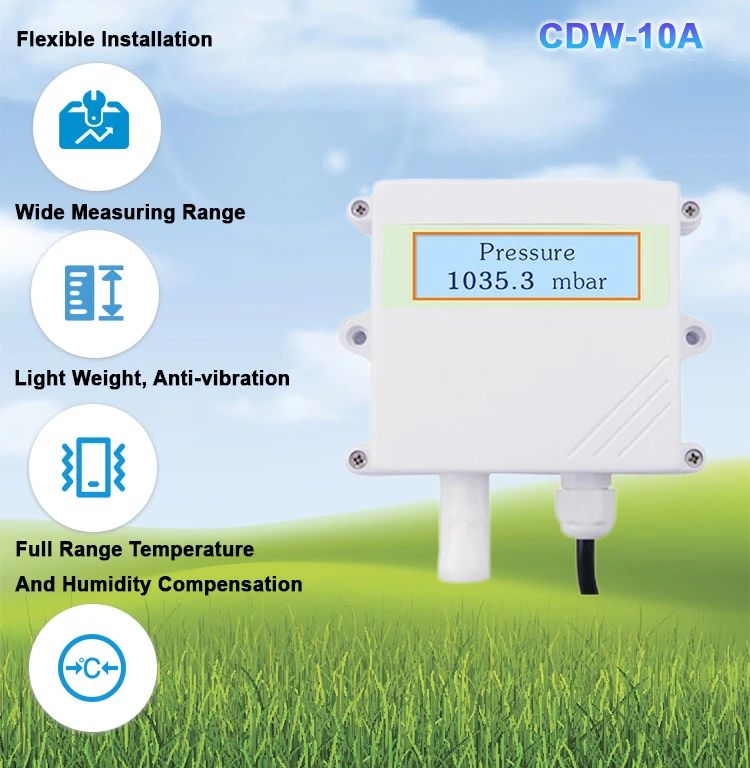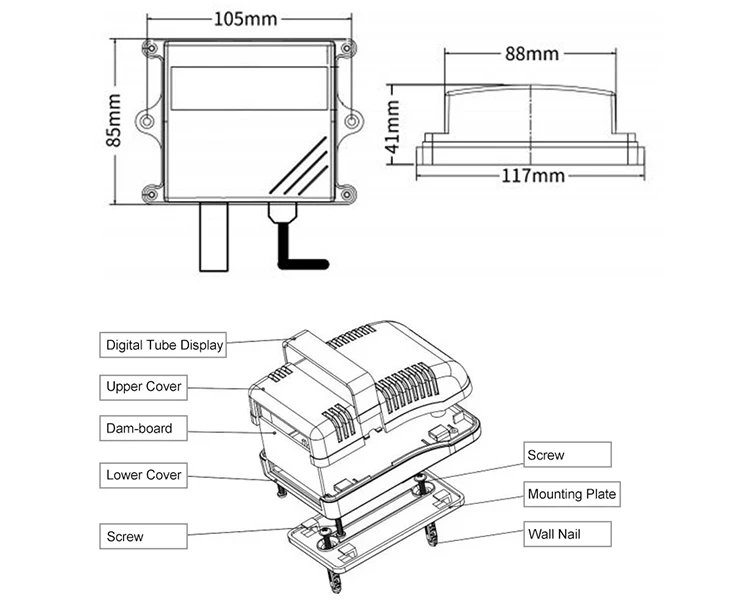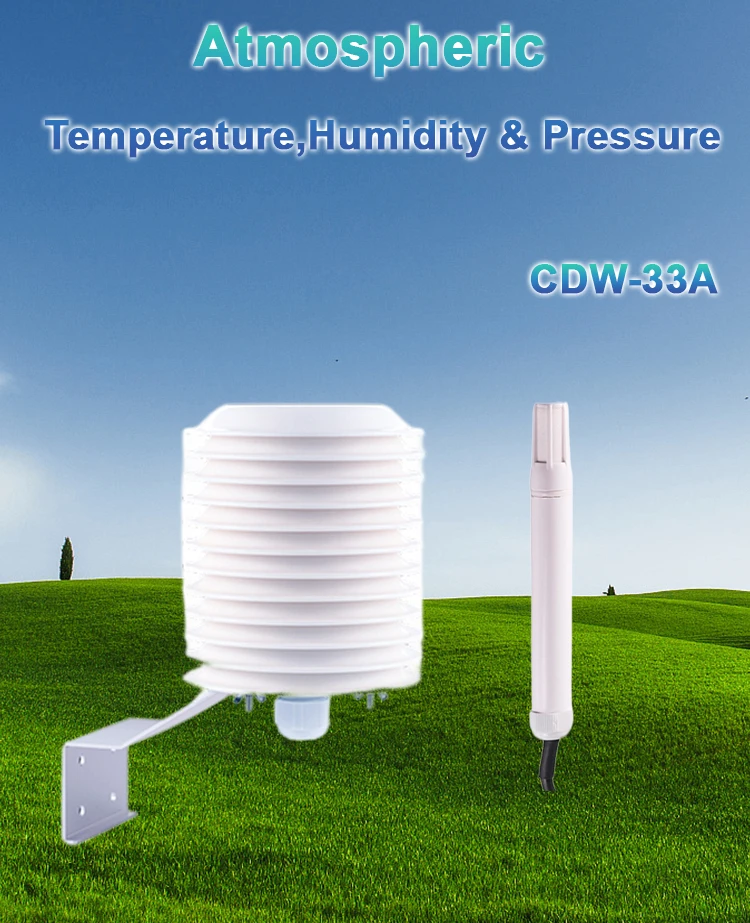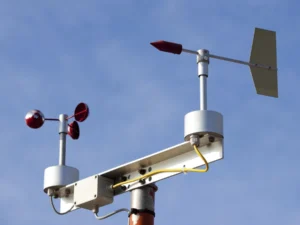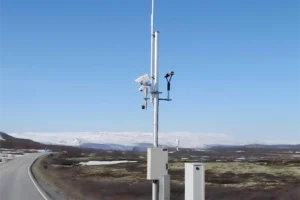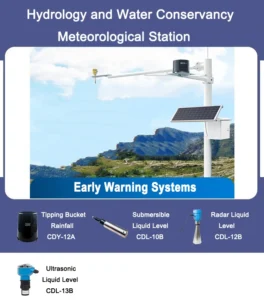Atmospheric Pressure: Definition, Measurement, and Effects
Define atmospheric pressure :Did you know that air pressure at sea level is crucial in shaping many natural phenomena? It affects wind patterns, cloud formation, and even ocean tides, making its influence omnipresent in our environment.
Whether it’s a sunny day or a storm, changes in barometric pressure cause these weather events. Understanding atmosphere and air pressure helps us see how we measure it and how it affects our lives.what is atmospheric air ambient pressure?
**How is atmospheric pressure formed?**
Gravity keeps a thick layer of air close to the Earth. This pull creates weight of air pressure.
As we go higher, gravity gets weaker. This makes the pressure exerted drop and creates different layers in the atmosphere.
Near the ground, gravity pulls air molecules close together. This is why there is higher pressure near the Earth’s surface.
**What influences atmospheric pressure?**
Gravity helps shape the atmosphere, but it does not make it static. The atmosphere is always changing. Earth’s spin, sunlight, and various landscapes all cause these changes.
**unit of atmospheric pressure**
The unit area of pressure measures the force applied to a specific area. This concept is important in science, engineering, and everyday life. A common unit used in industry is pounds per square inch (psi). This unit is mainly used in the united states and some industries.
– **Earth’s rotation:**
Earth’s rotation affects how average air pressure at sea level is spread out. This happens through the Coriolis effect.
When air masses moves, it goes from high-pressure areas to low-pressure areas. This pressure difference makes the air change direction. Other factors can also influence this change.
This change in direction creates spinning weather systems. We call low-pressure systems cyclones and high-pressure systems usually bring inverted cyclones. Also, the difference in speed at various latitudes makes air movement uneven across the planet.
– **Solar radiation:**
The Sun warms the atmosphere with direct and scattered radiation. This causes uneven heating in different regions and seasons. When the atmosphere gets hot, air expands and rises, which lowers local pressure. This unequal heating leads to constant changes in atmospheric pressure around the world.
– **Terrain features:**
The Earth’s surface is not flat. Oceans, mountains, and valleys change how much heat different areas absorb from the sun. They also affect how much heat is released. For example, water takes longer to warm up and cool down than land does.
This leads to events like sea breezes during the day. At this time, high-pressure air moves from the ocean to low-pressure areas on land. At night, the opposite happens, creating land breezes. Mountains can also block or direct airflow, which affects pressure changes.
**How does atmospheric pressure affect weather?**
**High-pressure systems:**
In areas with high air pressure, air usually sinks to the ground. As it goes down, it gets compressed and warms up. This causes moisture in the air to evaporate. As a result, we see clear skies and dry weather in high-pressure zones.
**Low-pressure systems:**
In low-pressure areas, air from the surroundings comes together and rises. As the rise air, it cools and expands. This process leads to condensation and forms clouds. These areas often have cloudy skies and rain.
**Rapid pressure drops (bomb cyclones):**
A bomb cyclone forms when pressure drops quickly. It must fall by at least 1% of normal pressure each hour. The total drop needs to be 10% or more. This can cause severe weather like strong storm winds or heavy blizzards.
For instance, a bomb cyclone once stopped transportation in Tokyo in just one day. This led to deaths and many injuries.
**The link between pressure changes and wind:**
Shifts in atmospheric pressure affect wind speed and direction. Wind happens when air moves from high-pressure areas to low-pressure areas. The bigger the difference in pressure, the faster the air moves and the stronger the wind. In simple terms, wind speed relates to the size of the pressure difference.
– **Earth’s rotation:**
Earth’s rotation affects how air pressure is spread out. This is known as the Coriolis effect. When air moves, it goes from high-pressure areas to low-pressure areas. This pressure difference makes the air change direction.
This change in direction creates spinning weather systems. We call low-pressure systems cyclones and high-pressure systems anticyclones. Also, the difference in speed at different latitudes makes air movement uneven across the planet.
– **Solar radiation:**
The Sun warms the atmosphere with direct and scattered radiation. This causes different areas to heat unevenly across regions and seasons. When the atmosphere gets warm, the air expands and rises, which lowers local pressure. This uneven heating leads to constant changes in air pressure that we see around the world.
– **Terrain features:**
The Earth’s surface is not flat. Oceans, mountains, and valleys change how much heat different areas absorb from the sun. They also affect how much heat is released. For example, water takes longer to warm up and cool down than land does.
This leads to events like sea breezes during the day. At this time, high-pressure air moves from the ocean to atmosphere atm areas on land. At night, the opposite happens, creating land breezes. Mountains can also block or direct airflow, which affects pressure changes.
**How does atmospheric pressure affect weather?**
– **High-pressure systems:**
In areas with high air pressure, air usually sinks to the ground. As it goes down, it gets compressed and warms up. This causes moisture in the air to evaporate. As a result, we see clear skies and dry weather in high-pressure zones.
– **Low-pressure systems:**
In low-pressure areas, air from around comes together and rises. As the air goes up, it cools and expands. This process causes condensation and forms clouds. These regions often have cloudy skies and rain.
– **Rapid pressure drops (bomb cyclones):**
A bomb cyclone forms when the pressure drops quickly. It must drop by at least 1% each hour. The total drop needs to be 10% or more. This can cause severe weather, like strong winds or heavy snowstorms.
For example, a bomb cyclone once stopped transportation in Tokyo in just one day. This led to deaths and many injuries.
-**The link between pressure changes and wind:**
Shifts in atmospheric pressure affect wind speed and direction. Wind happens when air moves from high-pressure areas to low-pressure areas. The bigger the difference in pressure, the faster the air moves and the stronger the wind. In simple terms, wind speed depends on how strong the pressure difference is.
How Atmospheric Pressure Affects the Human Body
**Ears**
During airplane takeoffs or landings, many people feel discomfort in their ears. This happens due to sudden changes in air pressure. These quick changes create a big difference in pressure inside and outside the ear. This makes it hard for the Eustachian tubes to open on their own, which can cause pain.
**Mood**
Being in low-pressure areas can reduce the oxygen around you, making it hard to breathe. This lack of oxygen can change your mood and often leads to feelings of depression. These mental effects can also cause symptoms like a fast heart rate, headaches, nausea, and other discomforts. People often mix up this issue, called “altitude sickness,” with having a “low body temperature.”
**Sinuses**
There is a clear link between low air pressure and migraines or headaches. When pressure drops, it creates an imbalance between outside air and the sinuses.
**Joints**
Changes in barometric pressure, especially with temperature shifts, can cause joint pain, particularly in the knees. There are two main reasons for this.
First, pressure affects how thick the fluid in joints is. Second, it can activate nerve endings that make you feel pain. People with joint problems may feel more discomfort during storms or big weather changes.
**Blood Pressure**
Changes in barometric pressure can affect blood pressure. Weather scientists say that lower pressure can lead to lower blood pressure for some people. This may cause symptoms like dizziness or blurred vision.
Blood vessels react to changes in humidity, pressure, wind, or cloud cover, just like they do to colder temperatures. Older adults, especially those 65 and older, are more likely to be affected by weather-related blood pressure changes.
How Air Pressure Is Measured
1. **Mercury Barometer**
The inches of mercury barometer was one of the first tools to measure air pressure. It came from Torricelli’s experiment.
You take a glass tube filled with mercury and turn it upside down in a pool of mercury. The height of the mercury column in the tube shows the strength of the air pressure. You can tell how strong the barometric pressure is by looking at that height.
One standard atmospheric pressure is 76 centimeters of mercury (760 mmHg). Modern technology has brought new liquids and electronic sensors. However, mercury barometers are still important for understanding how we measure the atmosphere.
2. **Box Barometer**
This device has a flexible metal diaphragm that senses pressure. When the barometric pressure changes, the diaphragm stretches or compresses. A lever system moves with this change. This movement makes the pointer on the gauge move and show the new pressure reading.
When column of air pressure goes up, the pointer moves clockwise. When it goes down, the pointer moves counterclockwise. Box barometers are portable and easy to care for. They can measure a wide range of pressures.
3. **Electronic Barometer**
An electronic barometer uses chip technology and pressure sensors. It turns changes in air pressure into electrical signals. These signals are processed and displayed as digital readings. Its portable design and accuracy make it very useful for work in atmospheric science and environmental studies.
4. **Atmospheric Pressure Sensor**
Air pressure sensors measure pressure by detecting changes in resistance or capacitance. Different barometric pressure create unique electrical responses. This helps accurately measure atmospheric conditions.
People often assemble pressure sensors with other weather-measuring tools. They use things like wind speed sensors, devices to measure sunlight, rain gauges, and tools to find wind direction. When they combine all these, they can build smart, self – working weather stations.
Distinguishing Barometric Pressure from Air Pressure definition
“Barometric pressure” and “atmospheric pressure” mean the same thing. They both describe how much force air pushes down on the ground. People often use these terms in the same way. However, there are some small differences:
– **Barometric Pressure** means the measurements taken with a barometer. Barometers provide a quick reading of pressure. This reading is commonly used in aviation and weather forecasting.
– **Atmospheric Pressure** refers to the pressure in the Earth’s atmosphere. It looks at different layers of the atmosphere. This is important for weather stations and safety route planning.
define low atmospheric pressure:
Increased temperature
Temperature changes have a big effect on air pressure. When the air gets warmer, molecules move faster. This causes the air to become less dense and the pressure to drop.
Cold air is heavier than warm air because it is denser. Gravity pulls cold air down more easily. The air molecules in cold air are packed closer together. This creates an area of high pressure.
Lowered humidity
Humidity is important for changes in air pressure. In humid weather, the air has more water vapor. Water vapor molecules are lighter than regular air molecules.
They take up more space in the air. This makes air molecules get compressed below and increases collisions, raising the pressure. When there is less water vapor, there are fewer collisions. This leads to lower pressure overall.
Increased altitude
Atmospheric pressure goes down as you go higher. At higher altitude increases, gravity’s pull is weaker. The number of gas molecules in the air also atmospheric pressure decreases.
When you rise 1,000 meters, air pressure drops by about 10%. This is because there are fewer air molecules up high, leading to fewer collisions between them.
At high altitudes, both oxygen and pressure drop. This is why climbers often feel breathless and have low oxygen levels.
